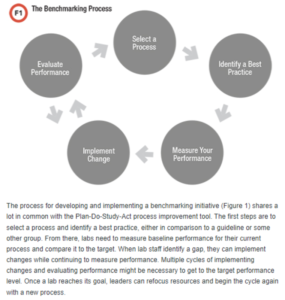How do I compare and stack up? Are we a better team, friend or athlete than our competitors are? It’s human nature to compare ourselves to others in almost all aspects of our lives. The advent of social media created an entirely new platform for comparison – and unfortunately many times with undesired outcomes. When we look at healthcare and the importance of laboratory medicine to provide valuable test results and data that drives actionable patient care, comparing ourselves to others can have beneficial outcomes that improve quality and patient safety.
Psychologist Leon Festinger first proposed social comparison theory in 1954 and stated
“We are unable to self-judge our opinions and abilities accurately and instead rely on comparing ourselves to other people to form an evaluation 1”.
Festinger (1954) argued that humans are driven to assess our abilities and opinions in order to:
- Determine whether we are good enough (abilities) or correct (opinions)
- Set a benchmark of what we aim to achieve
Festinger referred to this “benchmark” as the “level of aspiration”; however, in laboratory medicine, a “benchmark” is a measure of the performance of a specific indicator against a target, such as the time it takes until a clinician receives a glucose test result. Indicators often develop out of problems and processes that are easily identifiable as being complex and error-prone.
In medicine, the focus on patient safety and outcomes sprang onto the scene by the way of a sentinel publication from the Institute for Medicine in 2000 called “To Err is Human: Building a Safer Health System” that stated up to 98,000 patients die annually as a result of medical errors. This publication prompted healthcare facilities to implement programs and practices to look at the safety and quality of the work performed. Over the past two decades, many initiatives were introduced to reduce medical errors and improve patient care, with benchmarking being a fundamental tool useful for identifying best practices and comparing one’s current performance to the ideal.
External or “relative” benchmarking is particularly useful for clinical laboratories and compares the performance of one laboratory to one or many others. Several benchmarking services, such as College of American Pathologists Q Probe, have formal laboratory programs to assist with the process. To ensure a single laboratory is compared to a “like” or peer laboratory, it is important to consider lab size (small community vs. large reference laboratory), how a data point is measured (single test result vs. test panel with many discrete results) and other differences that may influence data. When laboratory data is compared between organizations, the laboratory with a more favorable outcome serves as the “ideal”, or target for those laboratories that can improve. The best practices of the better performing laboratory are identified and other laboratories can then develop improvement programs to provide even better patient care.
There are certainly challenges involved in the process of benchmarking. A very specialized laboratory may have difficulty in identifying a similar laboratory for comparison. In addition, access to the correct data can be difficult, challenging either in the need to manipulate data from multiple systems, or in simply having access to the data. Ensuring adequate personnel resources to monitor, report, implement change and re-monitor is also a common barrier to participating in a benchmark activity.
A pivotal aspect of the benchmarking process is that once improvements are implemented, performance continues to be monitored and further process changes and adjustments are made in an effort to drive better outcomes. In short, benchmarking allows a laboratory to understand what is happening in the current state and, by comparing to others, identifies gaps, and allows a laboratory to set a baseline and goals for improvement. When laboratories know where they stand, and learn from others, they can implement more efficient and fail-proof workflow process. Safe and quality processes are not only important for enhanced quality patient care, but also in eliminating non-value added activities that put unnecessary demands on valuable healthcare resources.

- Festinger L. A theory of social comparison processes. Human Relations. 1954;7(2):117-140. doi:10.1177/001872675400700202
- Institute of Medicine (US) Committee on Quality of Health Care in America. To Err is Human: Building a Safer Health System. Kohn LT, Corrigan JM, Donaldson MS, editors. Washington (DC): National Academies Press (US); 2000. PMID: 25077248.
- Rufolf, J. (2020,April 1). Benchmarking: A Promising Practice for Lab Stewardship Toolkit. Clinical Laboratory News. Benchmarking: A Promising Practice for Lab Stewardship Toolkits | AACC.org
